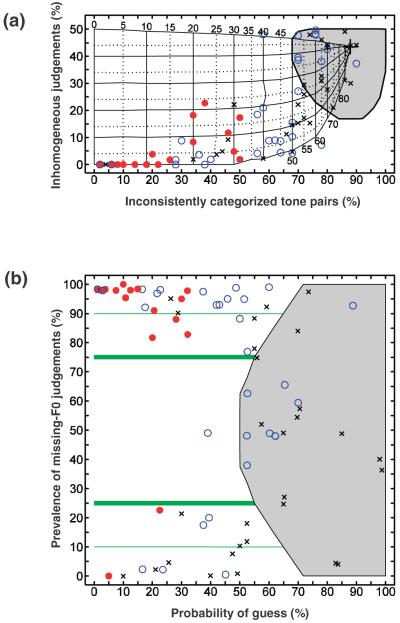Figure 6.
Simulation-based correction for guessing. (a) Outer axes represent experimental parameters and inner grid represents model parameters; for further details, see in-text discussion of this figure. (b) Mapping of experimental parameters onto the model parameters. Response characteristics of individual participants are visualized in a two-dimensional parameter space, with the probability of guess as the abscissa and the prevalence of missing F0 judgments as the ordinate. Participants guessing all the time would be mapped, with probability 99.9%, into the gray area, signifying the “forbidden region.” Data points falling into this region were excluded from further statistical analysis. The prevalence of nonmusicians (×) above the 75% line and of amateurs (open circles) and professionals (filled circles) below the 25% line shows that musical expertise is associated with a significant shift from spectral hearing toward F0-based hearing.

